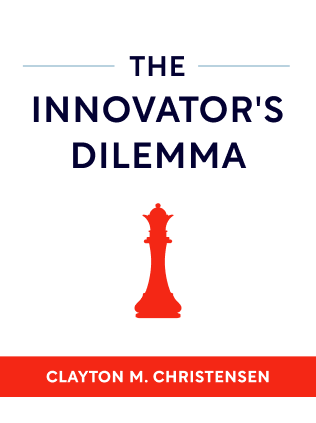

This article is an excerpt from the Shortform summary of "The Innovator's Dilemma" by Clayton M. Christensen. Shortform has the world's best summaries of books you should be reading.
Like this article? Sign up for a free trial here .
What are disruptive products? How can you ensure that your organization has the capabilities to support developing disruptive products?
A disruptive product is able to change up the market landscape, often pulling customers away from industry staples. Having the right team working on a disruptive project is essential.
Read more about how to set up your organization to support developing disruptive products.
Organizational Structure and Disruptive Products
When a manager evaluates her company’s capabilities and disabilities in order to take on a new project for a disruptive product, it’s critical that she chooses the right team organization to manage it.
These are the most effective organizational structures based on capabilities:
- The values are compatible, but not the processes: If the project is a sustaining technology—meaning it fits the company’s values—but it’s radical enough to require new processes, the project can be executed within the company. However, it needs a heavyweight team, which has the autonomy to create new workflows and patterns of communication that become processes specific to that team. Heavyweight team members must each act as a sort of general manager to make decisions that are in the best interest of the project.
- The values and processes are both compatible: Disruptive products can be executed within the company by a functional or lightweight team, which simply has a project manager overseeing the project.
- Neither the values nor processes are compatible: If the project is disruptive, it’s incompatible with the company’s values as well as its processes. This kind of project requires a spin-out or acquired entity managed by a heavyweight team.
- The processes are compatible, but not the values: If the disruptive products project fits the company’s existing processes, but not its values, because the innovation requires a different cost structure, there are two options: First, the project could be executed within the company, as long as company leaders ensure that the project develops independent budgeting and management processes. Second, the project could be carried out in a spin-out or acquired organization.
Values and Processes Case Study
Digital Equipment Corporation (DEC) was a major minicomputer maker from the 1960s to the 1980s, but the company failed to adapt when personal computers disrupted the industry.
Let’s look at each of the sources of capabilities and disabilities to see why DEC struggled with disruptive products.
1) Resources: DEC had ample resources—including money, competent engineers, and advanced technology—to transition to the personal computer market.
2) Processes: DEC’s processes were tailored to the minicomputer market, which became disabilities in the personal computer market. DEC designed and manufactured many custom components for their minicomputers, which they sold directly to customers. As a result of this highly detailed and hands-on process, the company turned out a new product every two to three years.
Personal computers were disruptive products that required very different processes. The market and cost structure demanded that computer makers order components from suppliers, manufacture the computers in high-volume assembly lines, and sell the products via retailers. Additionally, companies had to turn around new products once or twice a year.
3) Values: DEC’ valued projects that brought in 50 percent gross margins or higher. Its processes and the nature of the minicomputer market created high overhead costs that required high gross margins. However, personal computers didn’t fit that cost structure, making DEC’s values a disability.

———End of Preview———
Like what you just read? Read the rest of the world's best summary of Clayton M. Christensen's "The Innovator's Dilemma" at Shortform .
Here's what you'll find in our full The Innovator's Dilemma summary :
- Christensen's famous theory of disruptive innovation
- Why incumbent companies often ignore the disruptive threat, then move too slowly once the threat becomes obvious
- How you can disrupt entire industries yourself






